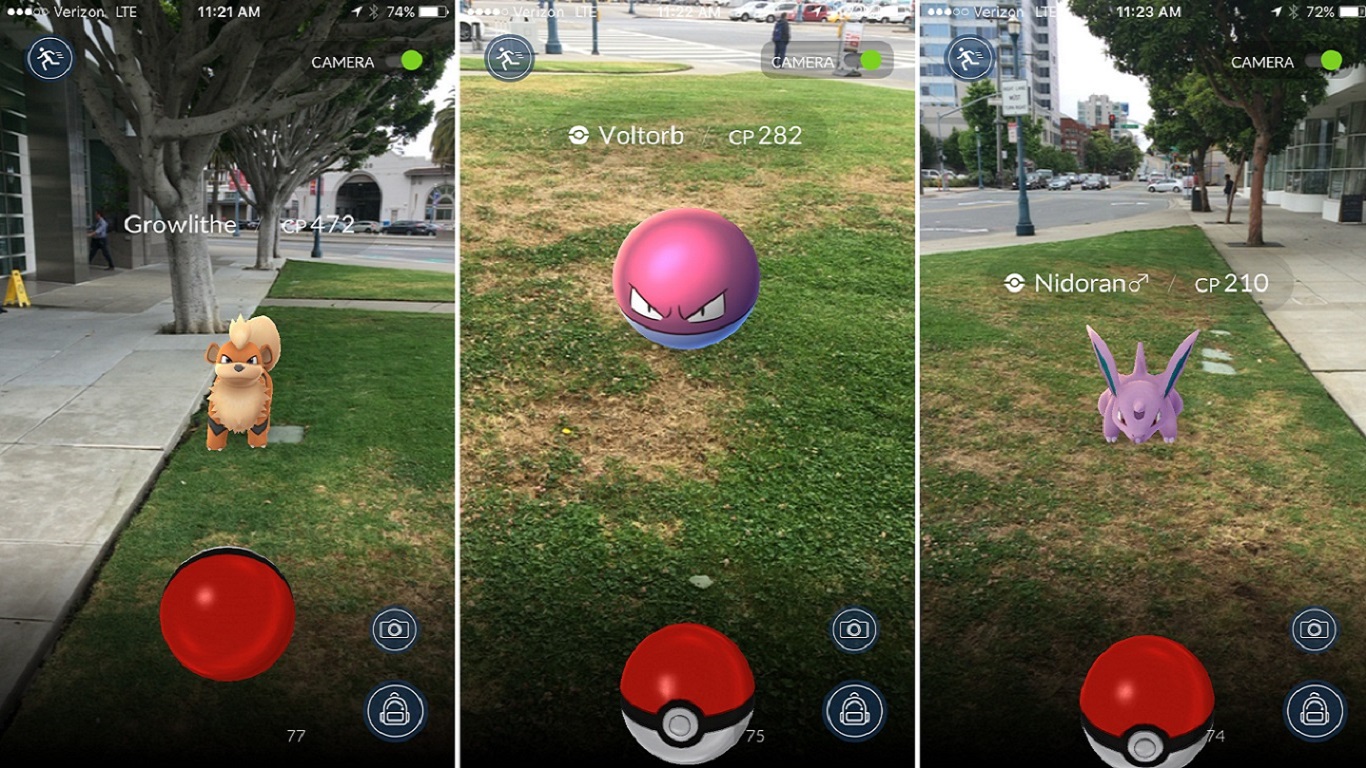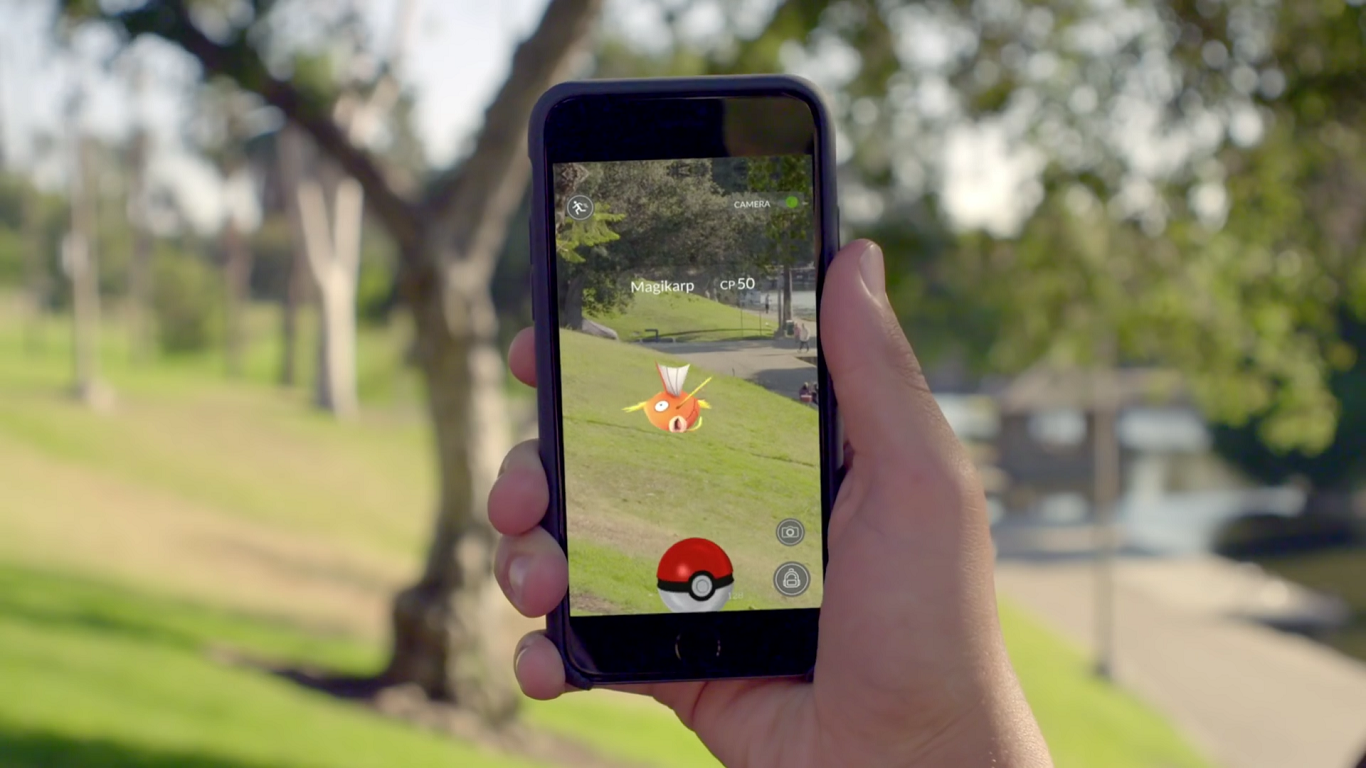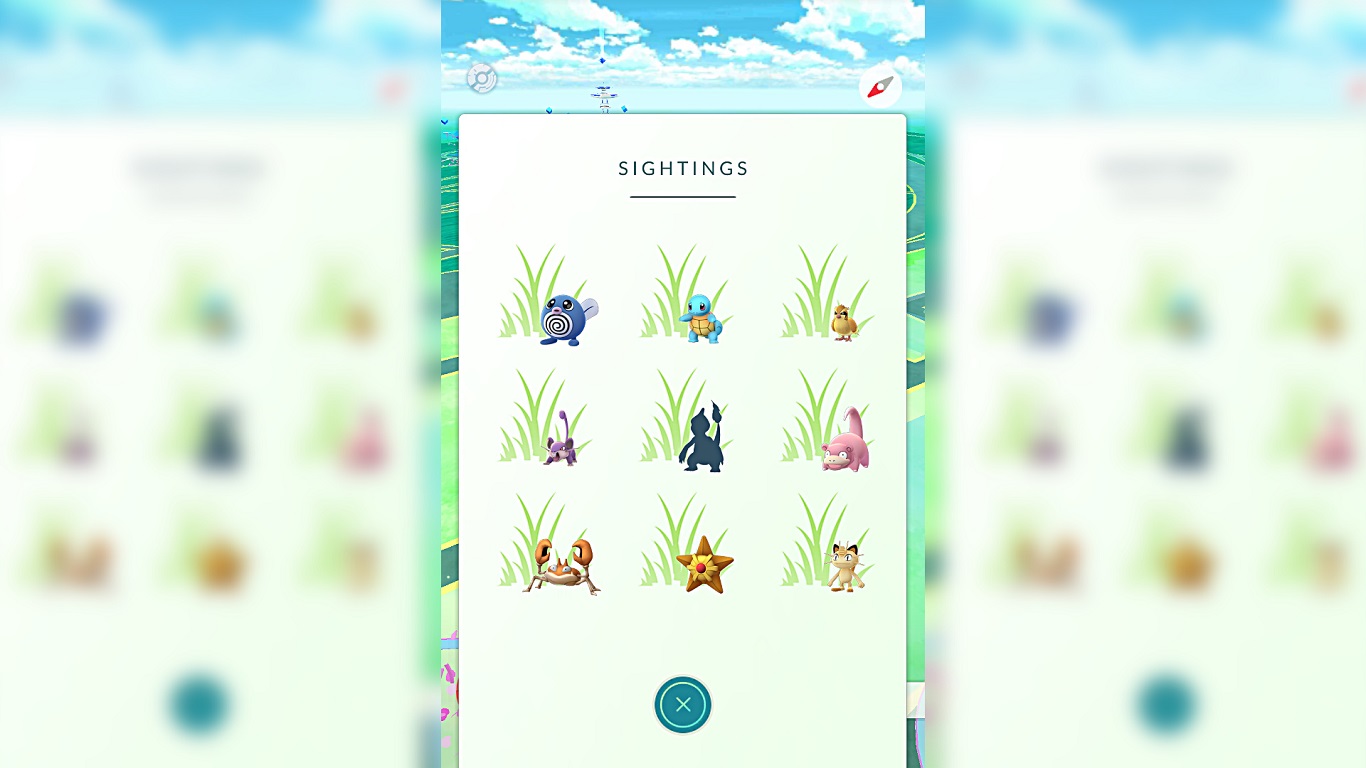INTRODUCTION
Pokemon Go is a free-to-play, location-based augmented reality game developed by Niantic for iOS and Android devices. The game was the result of a collaboration between Niantic and Nintendo, by way of The Pokémon Company, and was initially released in selected countries in July 2016. The game utilizes the player's mobile device's GPS ability to locate, capture, battle, and train virtual creatures, called Pokémon, which appear on the screen as if they were atthe same real-world location as the player. The game features a freemium business model and supports in-app purchases for additional in-game items.Pokémon Go was released to mixed reviews, with critics praising the game's concept and the incentive to be more active in the real world, while criticizing frequent technical issues that were prevalent around the time of the original launch. Despite such reviews, it quickly became a global phenomenon and was one of the most used and profitable mobile apps in 2016, having been downloaded more than 500 million times worldwide. It was credited with popularizing location-based and augmented reality technology, promoting physical activity, and helping local businesses grow due to increased foot traffic. However, it also attracted controversy for contributing to various accidents, as well as becoming a public nuisance at some locations. Various governments also expressed concerns over the security of the game, with some countries passing legislation to regulate its use.
GAMEPLAY
After establishing a game account, players create and customize their own avatars.Once created, an avatar is displayed on a map based on the player's geographical location. Features on the map include 'PokéStops' and 'Pokémon gyms'. PokéStops provide players with items, such as eggs, Poké Balls, berries, and potions. These PokéStops can be equipped with items called 'lure modules', which attract additional wild, and occasionally rare, Pokémon.Gyms serve as battle locations for team-based king of the hill matches.PokéStops and gyms are typically located at places of interest.These locations are re-purposed portals from Ingress, Niantic's previous augmented reality game. This has led to PokéStops and Pokémon gyms being placed at dangerous or inconvenient locations, such as a now-deleted gym at the Korean DMZAs players move within their real world surroundings, their avatars move within the game's map. Different Pokémon species reside in different areas of the world; for example, water-type Pokémon are generally found near water.When a player encounters a Pokémon, it may be viewed either in augmented reality (AR) mode or with a live rendered, generic background.AR mode uses the camera and gyroscope on the player's mobile device to display an image of a Pokémon as though it were in the real world. Players can take screenshots of the Pokémon they encounter either with or without the AR mode activated.
Unlike other installments in the Pokémon series, players in Pokémon Go do not battle wild Pokémon to capture them. During an encounter with a wild Pokémon, a player may throw a Poké Ball at it by flicking it from the bottom of the screen up toward the Pokémon. If the Pokémon is successfully caught, it will come under the ownership of the player. Factors in the success rate of capture include the Pokémon's capture rate, the timing and the type of Poké Ball used. After capturing a wild Pokémon, the player is awarded two types of in-game currencies: candies and stardust. The candies awarded by a successful catch depend on what evolutionary chain a Pokémon belongs to. A player can use stardust and candies to raise a Pokémon's "combat power" (CP). However, only candies are needed to evolve a Pokémon. Each Pokémon evolution tree has its own type of candy, which can only be used to evolve or level up. The player can also transfer the Pokémon back to the Pokémon professor to earn one more candy and create room for more Pokémon. The ultimate goal of the game is to complete the entries in the Pokédex, a comprehensive Pokémon encyclopedia, by capturing and evolving to obtain the original 151 Pokémon.
Although the game is free to play, it supports in-app purchases, where players can purchase additional Poké Balls and other in-game items.These items include incense (which attract Pokémon to you as you move for thirty minutes), lure modules, to attract Pokémon to a fixed location, and lucky eggs, which double experience points gained for a thirty-minute period from use. All Pokémon are displayed with a combat power. A Pokémon's combat power is a rough measure of how powerful that Pokémon is in battle. Generally, as players level up, they catch Pokémon with higher CP.
Players earn experience points for various in-game activities. Players rise in level as they earn experience points (XP). At level five, the player can battle at a Pokémon gym and join one of three color-coded teams (red for Team Valor, blue for Team Mystic, or yellow for Team Instinct), which act as factions within the Pokémon Go world. If players enter a Pokémon gym that is controlled by a player that is not part of their team, they can challenge the leader to lower the gym's "prestige". Once the prestige of a gym is lowered to zero, the player will take control of the gym and can deposit one Pokémon to defend it. Similarly, a team can upgrade the prestige of a gym under its control by battling the gym leader. Each time a gym's level is raised, another player from the same team can deposit one Pokémon.
In September 2016, Niantic announced a "Buddy Pokémon" feature, which allows players to pick a Pokémon to appear alongside them on the profile screen, and receive in-game rewards and bonuses based on the chosen Pokémon. The feature was released later that month. During that same update, Niantic updated Pokémon Go to prevent players with rooted or jailbroken devices from logging into the game in an effort to reduce and prevent cheating.In June 2017, Niantic announced that the game mechanics of gyms would be revamped for a more teamwork-oriented experience;gyms were disabled on June 19, 2017, with the new gyms being released with the next app update a few day layer. As of the update, Gyms included a spinnable component to receive in-game items such as potions and Pokéballs. Additionally, gyms are capped at containing six Pokémon, each of which must be unique in that gym. Coins are now earned based on the amount of time the defending Pokémon has been in a gym, as opposed to a one-per-day gym defender bonus of 10 coins per current defending Pokémon .




